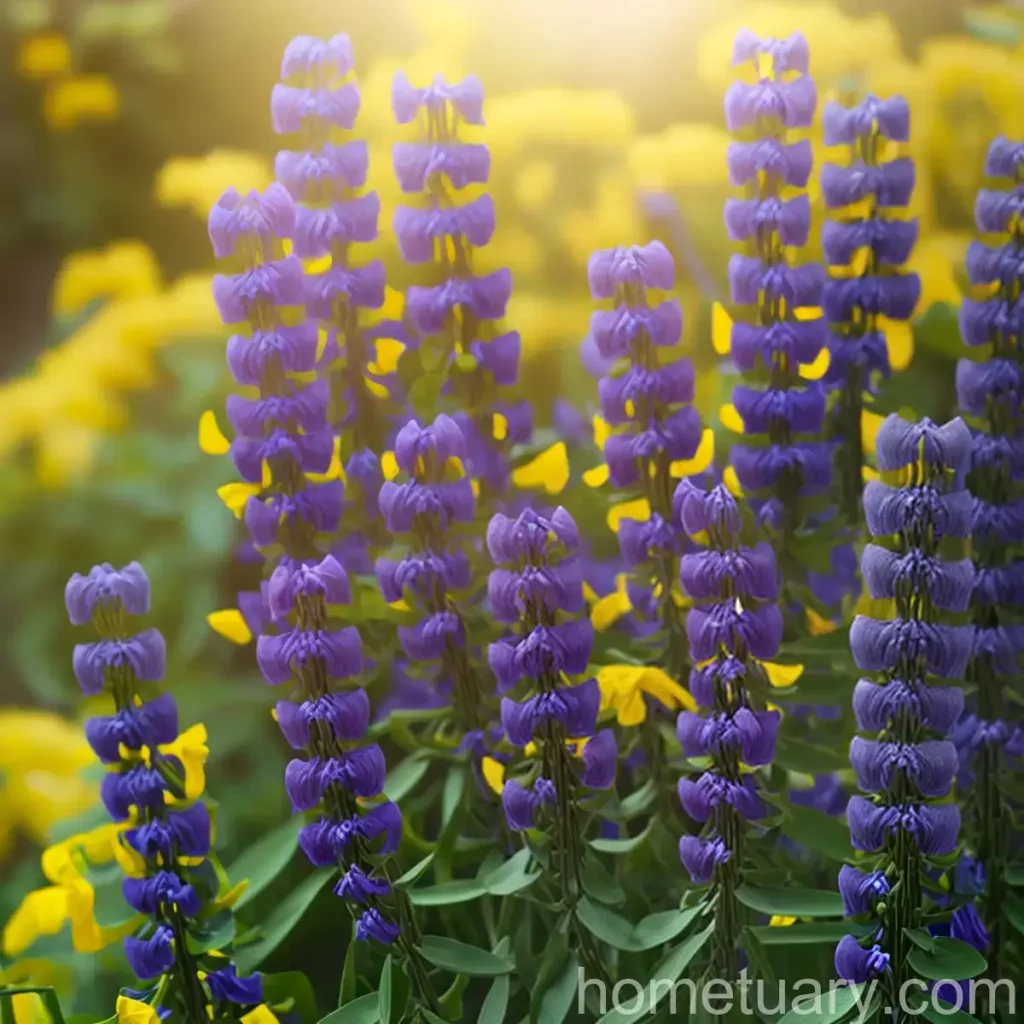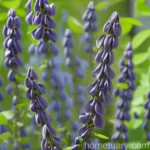Yellow Wild Indigo (Baptisia sphaerocarpa): A Complete Guide
Yellow wild indigo, scientifically known as Baptisia sphaerocarpa, is a stunning perennial plant native to the southeastern United States. This plant is a member of the legume family, Fabaceae, and is known for its bright yellow flowers that add a splash of color to gardens and natural landscapes. In this comprehensive guide, we will explore the key characteristics of yellow wild indigo, its uses, cultivation, folklore, and much more.
What is Yellow Wild Indigo (Baptisia sphaerocarpa)?
Yellow wild indigo, also known as yellow prairie indigo, is a herbaceous perennial plant with a bushy, shrub-like growth habit. It is characterized by its vibrant yellow flowers, which bloom in late spring to early summer, and its trifoliate leaves. The plant typically reaches a height of 3 to 4 feet and has a spread of 2 to 3 feet, making it a great addition to both garden beds and naturalized landscapes.
This plant thrives in various habitats, including open woodlands, prairies, and along roadsides, and is well-adapted to a range of growing conditions. Its ability to fix nitrogen in the soil makes it a valuable addition to sustainable landscaping and natural ecosystems.
Key Takeaways – Yellow Wild Indigo (Baptisia sphaerocarpa)
Yellow Wild Indigo Benefits
- Adds vibrant yellow color to gardens and natural landscapes
- Fixes nitrogen in the soil, improving soil fertility
- Attracts pollinators such as bees and butterflies
- Provides food and habitat for wildlife
Baptisia sphaerocarpa Uses
- Ornamental garden plant
- Medicinal purposes
- Soil improvement and nitrogen fixation
- Wildlife habitat and food source
Yellow Wild Indigo Characteristics
- Herbaceous perennial
- Bushy growth habit
- Vibrant yellow flowers
- Trifoliate leaves
- Nitrogen-fixing
Let’s dive deeper into the aspects of cultivating and caring for yellow wild indigo, including its cultural requirements, uses, and propagation techniques.
Culture
Water
Yellow wild indigo has moderate water needs and is relatively drought-tolerant once established. It is important to ensure that the plant receives adequate moisture during the establishment phase and in times of prolonged drought. However, it is crucial to avoid overwatering, as the plant is adapted to various soil conditions, including well-drained soils.
Sunlight
This plant thrives in full sun to partial shade, making it a versatile addition to a range of garden settings. Providing it with at least six hours of direct sunlight each day will result in optimal growth and abundant flowering.
Fertilizer
Yellow wild indigo is a low-maintenance plant that generally does not require heavy fertilization. However, incorporating organic matter into the soil during planting can provide a nutrient boost. Additionally, a light application of balanced fertilizer in early spring can support healthy growth and flowering.
Soil
This plant prefers well-drained, loamy soils but is adaptable to various soil types, including sandy and clay soils. It is important to avoid waterlogged conditions, as this can lead to root rot. A slightly acidic to neutral soil pH is ideal for yellow wild indigo.
Pruning
Pruning yellow wild indigo is relatively minimal and is primarily done for maintenance and shaping purposes. Deadheading spent flowers can encourage prolonged blooming and prevent self-seeding in garden settings. In late fall or early spring, removing any dead or damaged stems can help maintain the plant’s overall health and appearance.
Propagation
Yellow wild indigo can be propagated through various methods, including division, seed sowing, and stem cuttings. Here is a brief overview of these propagation techniques:
Division
- Divide established clumps in early spring
- Ensure each division has a portion of the root system
- Replant divisions in suitable locations
Seed Sowing
- Collect mature seeds in late summer to early fall
- Scarify seeds to break dormancy
- Sow seeds in prepared seedbeds or containers
- Keep the soil consistently moist until germination occurs
Stem Cuttings
- Take semi-ripe stem cuttings in midsummer
- Remove lower leaves and dip cut ends in rooting hormone
- Plant cuttings in a well-draining rooting medium
- Provide bottom heat to encourage root development
Container Popularity
Yellow wild indigo is well-suited to container cultivation, particularly for gardeners with limited garden space. Its compact growth habit and ornamental appeal make it an attractive choice for container gardens, patios, and balconies. When growing yellow wild indigo in containers, ensure the containers have adequate drainage and provide regular care to support healthy growth.
Common Diseases and Pests
Despite being relatively low-maintenance, yellow wild indigo may be susceptible to certain diseases and pests. Here are some common issues to be aware of:
Disease Diagnosis
- Root Rot: This can occur in poorly drained soils or in waterlogged conditions. Symptoms include yellowing or wilting foliage and stunted growth.
- Powdery Mildew: A fungal disease that appears as a white powdery coating on leaves and stems, particularly in humid conditions.
Common Pests
- Aphids: These sap-sucking insects can cluster on new growth and flower buds, causing distortion and weakening of the plant.
- Leafhoppers: They may cause stippling and discoloration of leaves as they feed on plant sap.
Botanist’s Tips
- When establishing yellow wild indigo, provide supplemental watering during dry spells to support root establishment.
- Incorporate a layer of organic mulch around the plant to conserve soil moisture and suppress weeds.
- Avoid heavy pruning in late summer, as this can impact flowering the following season.
Fun Facts
- Yellow wild indigo’s bright yellow flowers serve as a valuable nectar source for pollinators, including bees and butterflies.
- The plant’s ability to fix nitrogen in the soil contributes to improved soil fertility and health in natural ecosystems.
Links to External Resources
For further exploration of yellow wild indigo and related topics, the following resources may be of interest:
- USDA Plants Database – Baptisia sphaerocarpa
- Lady Bird Johnson Wildflower Center – Yellow Wild Indigo
- Missouri Botanical Garden – Baptisia sphaerocarpa
In conclusion, yellow wild indigo is a valuable plant with ornamental, ecological, and medicinal significance. Its vibrant yellow flowers, adaptability to various growing conditions, and role in supporting wildlife make it a wonderful addition to gardens, natural landscapes, and restoration projects.
Whether you are interested in cultivating this plant for its ornamental appeal, ecological benefits, or cultural significance, incorporating yellow wild indigo into your landscape can offer a host of rewards. From its joyful blooms to its role in sustainable landscaping, this remarkable plant continues to captivate plant enthusiasts and conservationists alike.
Remember to share your own experiences and insights regarding yellow wild indigo and connect with fellow enthusiasts to further enrich your understanding and appreciation of this remarkable plant!
References
- Brown, A. “Baptisia sphaerocarpa.” In: Fire Effects Information System, [URL].
- “Baptisia sphaerocarpa.” Missouri Botanical Garden, [URL].
- “Yellow Wild Indigo.” Lady Bird Johnson Wildflower Center, [URL].
- Steiner, R. “Gardening with Native Plants of the South.” The University of North Carolina Press, 2015.
By incorporating the principles of sustainable gardening and native plant landscaping, we can collectively contribute to the preservation and enhancement of our natural environment for future generations. Thank you for joining us on this exploration of yellow wild indigo, and we look forward to continuing our shared journey of discovery in the world of plants and ecosystems!















